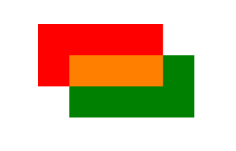Package Exports
- @ng-web-apis/canvas
- @ng-web-apis/canvas/package.json
Readme
 Canvas API for Angular
Canvas API for Angular
This is a library for declarative use of Canvas API with Angular.
Install
If you do not have @ng-web-apis/common:
npm i @ng-web-apis/commonNow install the package:
npm i @ng-web-apis/canvasUsage
Add CanvasModule to your module declaration and use waCanvas2d directive on a
canvas element to declare 2D context scope. Then
use other directives to draw inside canvas:
<canvas waCanvas2d>
<canvas-path fillStyle="red">
<canvas-rect
[x]="0"
[y]="0"
[width]="100"
[height]="50"
></canvas-rect>
</canvas-path>
</canvas>Context directive supports the following attributes (see contextAttributes for 2D context):
opaque—booleanattribute to setalphatofalsedesynchronized—booleanattribute to setdesynchronizedtotrue
Directives
There are 3 types of directives you can use:
- Method directives
- Properties directives
- Path directives
Method
These are basic directives to draw things on canvas.
canvas-clip-pathcanvas-draw-imagecanvas-textcanvas-path- You can use
pathinput to passPath2D
- You can use
Properties
These directives set properties of
CanvasRenderingContext2D. They must be
applied to a method directive and they change context property before calling the method. They also restore default
value after drawing is performed so it will not interfere with the rest of picture.
clip- Either pass a reference to
canvas-clip-pathdirective or aPath2Dobject
- Either pass a reference to
clipFillRuledirectionfillStylefilterimageSmoothingEnabledimageSmoothingQualityfontglobalAlphaglobalCompositeOperationlineCaplineDashOffsetlineJoinlineWidthlineDashmiterLimitstrokeStyletextAligntextBaselineshadowBlurshadowColorshadowOffsetXshadowOffsetYtransform
Path
You can use following directives to draw path on Canvas. They must be children of canvas-path directive:
canvas-arccanvas-arc-tocanvas-bezier-curve-tocanvas-ellipsecanvas-line-tocanvas-move-tocanvas-quadratic-curve-tocanvas-rect
Example
Combining properties, method and path directives can be examined on the following case. Consider drawing two rectangles with native commands:
function drawTwoRectangles(context) {
context.beginPath();
context.fillStyle = 'red';
context.rect(0, 0, 100, 50);
context.fill();
context.beginPath();
context.fillStyle = 'green';
context.globalCompositeOperation = 'screen';
context.rect(25, 25, 100, 50);
context.fill();
context.fillStyle = '#000';
context.globalCompositeOperation = 'source-over';
}This is equivalent to the following HTML
<canvas waCanvas2d>
<canvas-path fillStyle="red">
<canvas-rect
[x]="0"
[y]="0"
[width]="100"
[height]="50"
></canvas-rect>
</canvas-path>
<canvas-path
fillStyle="green"
globalCompositeOperation="screen"
>
<canvas-rect
[x]="25"
[y]="25"
[width]="100"
[height]="50"
></canvas-rect>
</canvas-path>
</canvas>And both will give you this result:
Pipes
You can use Pipes to create some of the classes, required for particular Canvas operations:
gradientto create CanvasGradientpathto create Path2Dpatternto create CanvasPatternradto convert degrees into radianstransformto convert CSS transform string into DOMMatrix
Notes
- Performance-wise it would of course be slower than performing imperative commands and optimizing them manually. But unless you are making a video game with heavy render cycle this shouldn't be noticeable.
- Unlike raw canvas, default stroke color is transparent to align behavior with SVG.
See also
Other Web APIs for Angular by @ng-web-apis


